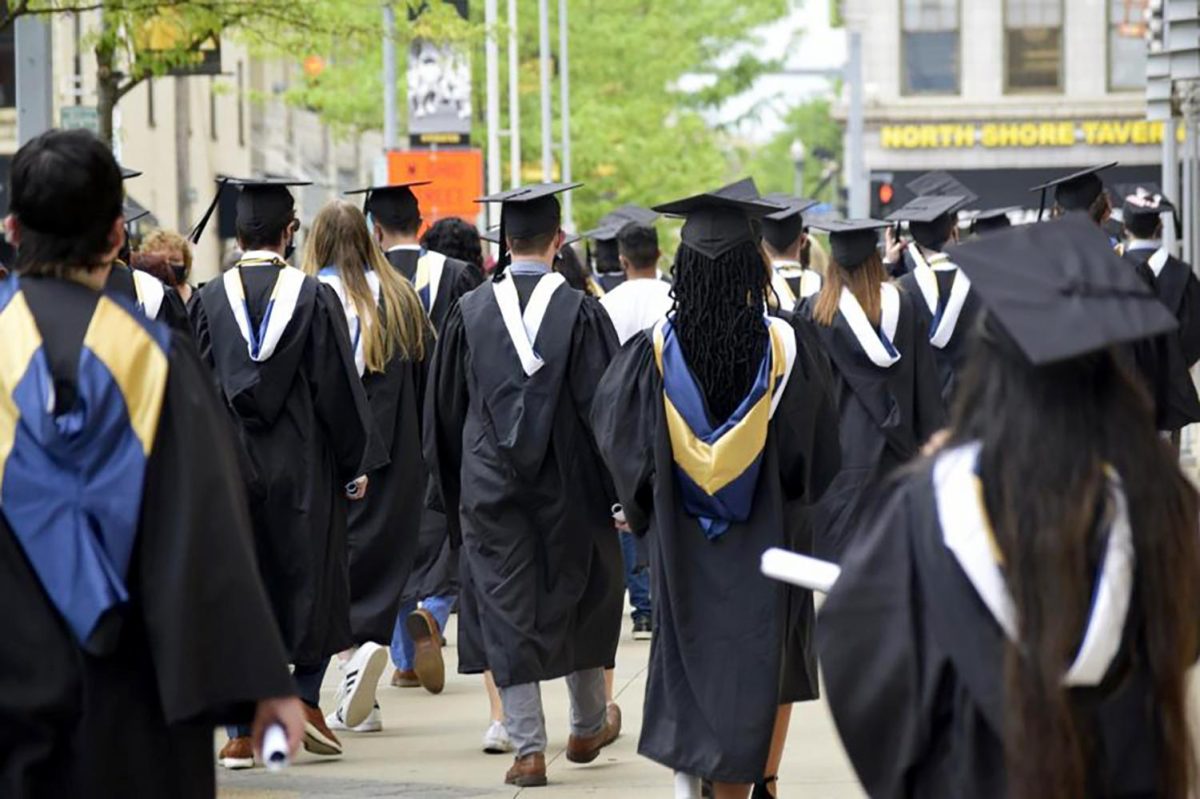Stamatakis: Corbett’s cut not entirely unjustified
April 16, 2011
Student demonstrations. Earnest pleas from state university presidents. Demonization of Gov. Tom… Student demonstrations. Earnest pleas from state university presidents. Demonization of Gov. Tom Corbett. All have made the final months of the semester particularly important in determining the future of the University’s funding. The Student Government Board and student activists across campus have been pleading with lawmakers not to cut Pitt’s state appropriation.
These leaders are claiming that the University has seen its appropriation drop for many years, and any further cuts will leave administrators no choice but to raise tuition. School officials say they have cut all the fat possible — Pitt has gone as far as devoting a portion of its webpage to the University’s efficiency and cost-cutting measures.
Yet hidden within this narrative is another set of facts not found on that website. Adjusted for inflation and enrollment changes, Pitt increased administrative spending 126 percent from 1993 to 2007. Penn State, another school facing cuts, increased such spending by 151 percent.
This data comes from a 2010 Goldwater Institute report, which cited data from theU.S. Department of Education. Administrative spending was defined as any spending not specifically directed toward instruction, research and service — and typically involved funding for positions such as business operations specialists, financial specialists, loan counselors and many others.
In comparison, the average increase nationwidein administrative spending among the US News & World Report top 100 colleges was 56.7 percent, and during the same period, Pitt raised its teaching budget by a smaller 28.75 percent. The huge administrative-spending increases by the two Pennsylvania schools were not only above the national mean, but also rank near the top of the list near elite schools like Duke, MIT and Boston College.
The numbers present an interesting foil to the narrative supplied by the school administration. While University officials credit the school’s diminishing state appropriation — a 9.6 percent absolute drop since 1993, adjusted for inflation — for rising tuition in the past, the blame might equally be shared by the University’s increased spending for these non-core, administrative functions.
Some of this increase does have merit, as well as a simple explanation. As universities transferred from paper to electronic information systems, many clerical employees who once filled file-clerk roles and secretary positions switched to administrative roles. Accordingly, their salaries switched from the clerical column to the administrative column in budget numbers reported to the Department of Education, Pitt spokesman John Fedele said in an e-mail.
Plus, as noted by Fedele, “In 1993, the first year cited by the study, research expenses at Pitt were $156 million; last year, they were $737 million, more than a 470 percent increase from 1993.” This explosion in new research did require more management to handle recruitment, organization and research support.
Yet even taking this into consideration, Pitt still increased administration more than did the average university. The Center for Measuring University Performance shows that from 1996 to 2007, Pitt ranked in the top third of schools for increasing administrative spending in relation to increasing research spending, and Penn State ranked even higher. To compare, Ohio State University saw a similar size jump in research spending yet only increased its administrative spending by about 40 percent.
It is important to note that most of these jobs and salaries typically aren’t completely wasteful, and that the school administration isn’t being deceitful. After all, all universities have shown massive increases in administrative spending primarily due to the nature of college funding. As noted by Robert Martin, a retired Centre College professor,in his paper, “The Revenue-to-Cost Spiral,” universities simply don’t have an incentive to minimize cost. In the private sector, costs are minimized in an effort to lower prices and increase demand, but in the university system, demand doesn’t decrease with higher tuition or rise with lower tuition. Furthermore, colleges need to demonstrate a need to earn federal and charitable funding. They therefore risk earning less if costs are too controlled and there isn’t urgency.
In many ways, the administrative increase reflects a similar situation in health care, another industry with a skewed demand/cost relationship. In fact, the inflation-adjusted costs of dentistry have risen almost equally with those of higher education since the 1970s, and much of this is attributable to high overhead costs from office staff, which can often eat up 25 percent of revenue. Yet just as with higher education spending, there isn’t a huge push to make practices more efficient because people can tolerate paying high amounts to go to the dentist.
Gov. Corbett’s cuts just might represent a significant enough change to control administrative spending at the University. While the initial proposed cuts were probably beyond administrative bloat, the smaller cuts currently being suggested might improve the efficiency of the University. Pitt and Penn State both led the country in terms of administrative increases until at least 2007, after all, so hopefully new focus will make it possible for the universities to lead the country in terms of administrative decreases over the next 10 years.
E-mail Nick at nps13@pitt.edu.


